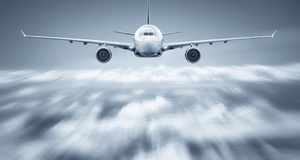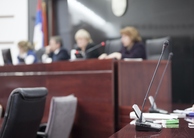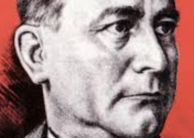The Legal Liability of Air Traffic Controllers
By
2012, Vol. 4 No. 02 | pg. 1/4 | »
IN THIS ARTICLE
KEYWORDS
The very first air traffic controller was Archie League at Saint Louis Airport in Missouri. His control tower was a wheelbarrow with an umbrella for shade during the summer heat, a notepad and flags. He was instructing the pilot to proceed by raising a checkered flag and was requesting the pilot to wait before being cleared to land or take off by waiving a red flag.1 At that time aviation was an infant industry but flights across the United States and across European countries started to operate.2 In the thirties runways were extended and Air Traffic Controllers (ATCO’s) were now stationed on top of the terminal building. Additional visual signals, markings on the ground and lights were installed on runways to facilitate operations. The introduction of radio communications enabled the ground to have basic and short communications with the pilots.3 During the Second World Ward radars of acceptable quality were introduced and were able to detect aircrafts and to determine their altitude, speed and registration. This new technology was soon implemented in the field of civil aviation. At that time air traffic control operations were relatively easy because there were few models of aircrafts and all were flying at approximately the same speed. The airspace was then divided into several flight information regions but at the end of the 1960s the introduction of supersonic jets like the Concorde or wide body commercial airliners like the Boeing 747 rendered operations more complex.4 The international aviation community soon realized that air traffic controllers are indispensable in order to ensure the safe operation of flights. The liability of the air carrier was defined long ago by the Warsaw Convention of 19295 and consolidated in 1999 by the Montreal Convention6. Similarly the liability to Third Parties on the Ground was established by the Rome Convention of 19527. These instruments provide legal certainty. However there is still no universal convention regulating the liability of air traffic controllers. This delicate question touching upon the sovereignty of States was not examined by the drafters of the Chicago Convention8 in 1944 and was left to national law. The aim of this paper is to analyze the various current rules that govern the liability of air traffic controllers and highlight their inconsistency across several jurisdictions. First, the main duties of States relating to the provision of air navigation services deriving from the Convention on International Civil Aviation is examined. Next, an enumeration and analysis of the core duties of air traffic controllers is undertaken. This paper explores the possible defendants in a claim against air traffic controllers for alleged negligence in the event of a serious incident or accident by analyzing the basis and form of ATCO’s liability in different States, followed by a discussion of the jurisdictional issues which highlight the remaining future challenges in relation to a possible unification of the rules regulating the liability of air traffic controllers.The Obligations of States Under the Chicago ConventionArticle 28(a) of the Chicago Convention provides that ‘’ Each contracting State undertakes, so far as it may find practicable, to: ‘’Provide, in its territory, airports, radio services, meteorological services and other air navigation facilities to facilitate international air navigation, in accordance with the standards and practices recommended or established from time to time, pursuant to this Convention’’. This provision is loosely formulated and some controversy exists as to whether this article is legally binding because of the escape-clause ‘’as far as States may find it practicable’’. However, in practise States do respect this obligation and enact national legislation for this purpose.9 Standard 2.5 of Annex 1110 to the Chicago Convention dealing with air traffic services provides that States must designate the portions of airspace and controlled aerodromes where air traffic services will be provided. Article 28 must be read in conjunction with Article 1 that provides that the contracting states have complete and exclusive sovereignty over the airspace over their territory irrespective of the nationality of the aircrafts entering their airspace; and Article 12 which provides that over the high seas the rules enforced are those established under the Chicago Convention. States can decide by agreements with other countries and subject to the approval of the ICAO Council to provide air navigation services above these areas. The United Kingdom, Canada and Norway for example offer such services. According to Article 69, if the ICAO Council considers that the airports and air navigation services of a Member State are not safe, it may issue recommendations after consultation with this State in order to remedy this situation. However this is not a legally binding obligation because no sanctions can be taken against a State who fails to comply with the recommendations of ICAO. Safety has always been a subject matter of primary importance for ICAO as highlighted in the Preamble which declares that the Convention will lay down ‘’principles and arrangements in order that international civil aviation may be developed in a safe and orderly manner’’ and Article 44 which states the International Civil Aviation Organization must ‘’ insure the safe and orderly growth of international civil aviation throughout the world’’. The Functions of an Air Traffic ControllerAir traffic controllers have certainly one of the most complex and stressful jobs. They undergo a unique training and particular skills are required to be an air traffic controller such as having good spatial orientation and situational awareness, have an excellent memory, the ability to make rapid and firm decisions and being able to stay calm under high pressure.11 Nowadays civil aviation is largely if not entirely dependent upon air traffic control. Consequently controllers carry a very heavy burden of responsibilities because they have to ensure the safety of human beings, third parties on the ground and very expensive aircrafts. The functions of air traffic controllers are laid down primarily in Annex 11 to the Chicago Convention, in Annex 212 dealing with the rules of the air and in ICAO Doc 4444.13 This document does not have the same status as the standards and recommended practices that are adopted by the Council of ICAO but it is nevertheless recommended by ICAO to the Member States for a worldwide application. ICAO Doc 4444 deals in great detail with all the technical and operational aspects of the provision of air navigation services but does not touch upon the question of the liability of air traffic controllers. According to Standard 2.2 of Annex 11, the air traffic controllers must prevent collisions between aircraft, prevent collisions between aircrafts on the maneuvering area and obstructions on that area, expedite and maintain an orderly flow of air traffic, provide advice and information useful for the safe and efficient conduct of flights, notify appropriate organizations regarding aircraft in need of search and rescue aid, and assist such organizations as required. Standard 2.3 of Annex 11 prescribes that air traffic services incorporate four different services, namely, the air traffic control service, the air traffic advisory service, the alerting service and the flight information service. These tasks include the monitoring and supervision of aircrafts using radars and satellite equipment and the relay of information by aeronautical communications using a specific terminology.14 ICAO may enact regional supplementary procedures and national legislation can complement these obligations. For instance, in the United States, the FAA Flight Services Order15 stipulates that the ATCO’s must also ‘’provide support for National Security and Homeland Defense’’ as well as ‘’provide additional services’’ if surrounding circumstances such as the volume of air traffic or the quality of the radar enable the controllers to do so. Annex 2 to the Chicago Convention stipulates that the instructions of the ATCO are binding upon the pilot. At the same time it proclaims that the pilot retains the ultimate responsibility for the safety of the passengers and the aircraft. These two provisions may appear to be conflicting and confusing but practice has shown that the clearances of the ATCO are to be followed by the pilots at all times except in cases of emergency where extraordinary circumstances lead the pilots to believe that another action is preferable.16 One of the very rare situations where a crew must disregard the orders given by a controller is where a conflict exists between the instructions given by him and those given by the collision avoidance equipment on board the aircraft (TCAS).17 This exception to the general rule that the orders of the ATCO must be followed is sadly illustrated by a terrible mid air collision that occurred on 1 July 2001. On that day, a Tupolev 154 operated by Bashkirian Airlines, en route from Moscow to Barcelona, collided in mid-air with a cargo Boeing 757 operated by DHL en route from Bergamo to Brussels, above the German town of Uberlingen. This portion of the German airspace was controlled by the Zurich control tower in Switzerland and there was only one controller in charge of the whole Zurich airspace at that time. 71 persons died in this tragic accident. The official accident investigation report conducted by the German investigating agency Bundesstelle für Flugunfalluntersuchung (BFU) revealed that the air traffic controller omitted to maintain a vertical separation between the two aircrafts. The controller failed to realize on time that the two aircrafts were on a collision course and only a few minutes before the impact he ordered the Russian crew to descent. After some seconds of confusion, the Russian crew followed the instructions of the controller while the crew of the cargo aircraft immediately complied with the resolution advisory commands of their TCAS. As a result the two aircrafts both descended at the same flight level and collided in mid air.18 At that time, the regulations published by ICAO and the national authorities concerning the use of the TCAS were contradictory, unclear and not unanimously accepted by all air operators. The Russian crew did not know that in case of conflict between the instructions of the ATCO and the orders given by the TCAS, the latter prevail according to the current international rules.19 Who Will be Sued?If an accident is caused totally or partially by an air traffic controller, an important question is to determine who will be sued. This section will enquire whether the defendant will be the State, the air navigation service provider or the air traffic controller in person. The onerous burden imposed on States by Article 28 to provide air navigation services within their territory is still in most cases carried out by governmental agencies. In such a case, the State will be the only actor that can be sued. However it may have the option to invoke state immunity as a defense and thus avoid prosecution.20 If a State claims State immunity, an individual trying to sue a foreign state may have to request the assistance of his home state and this adds a political dimension to the problem. The United Kingdom applied the doctrine that the ‘’King can do no wrong’’ until it waived its immunity in 1947. Five years later, Canada recognized that it could be liable for the acts of its civil servants.21 In the United States, an air traffic controller could be held personally liable until the federal Government waived its immunity in the Federal Tort Claim Act (FTCA) of 194422. From that time it can be sued in front of a federal court in the same way as would be an individual under the same circumstances. The act provides that ‘’ the district courts shall have exclusive jurisdiction of civil actions on claims against the United States, for money damages, accruing on and after January 1, 1945, for injury or loss of property, or personal injury or death caused by the negligent or wrongful act or Omission of any employee of the Government while acting within the scope of his office or employment, under circumstances where the United States, if a private person would be liable to the claimant in accordance with the law of the place where the act or omission occurred’’. However this waiver is not absolute and the government can still avoid liability under certain exceptions. Indeed the United States government cannot be held liable for the performance of the failure to perform a discretionary function. The FTCA does not contain a definition of what is a discretionary act but the US courts held in 1953 in Dalehite v United States23 that ‘’employees exercise a discretionary function ‘’where there is room for policy judgment’’. According to Sasseville ‘’ although involving an element of judgment, most of the day-to-day decisions of the ATCO’s in carrying their responsibilities are not protected by the discretionary function exception since the judgments or choices involved in those activities are not grounded in social, economic and political policy’’.24 In United States v Union Trust25 and in Eastern Airlines v Union Trust26 it was held that the controller owes a duty of care to the pilot and that the US government can be vicariously liable on their behalf. In the latter case it was held that ‘’tower operators merely handle operational details which are outside the area of the discretionary functions and duties referred to in s. 2680 (a); [...] consequently, the Tort Claims Act permits the Government to be sued for damages sustained because of their negligence’’. In lndian Towing c. United States27, it was held that when the government decides to provide services in the absence of any law imposing such an obligation on him, it will subsequently be liable in the case of reckless performance of these services. This is also called the doctrine of ‘’Good Samaritan’’. In this case the US government has exercised its discretion when it decided to operate a lighthouse but was vicariously liable for the negligence of the coast guards who had failed to repair it and ensure its proper operation. In 1977, two B747 collided at Tenerife Airport in the Canary Islands causing the death of 583 people. The technical investigation revealed that the accident was caused by the miscommunications between the pilots of one aircraft and the control tower. In the litigation following the accident, the Spanish State waived its immunity, was found liable on behalf of its employees and partly paid for the damages of the victims. The situation is very different among countries even among Member States of the European Union. For example, as will be explained later in this paper, in Germany, the State is the only entity that can be sued.28 Under Article 28 the provision of air navigation services is clearly a State responsibility. However the State can fulfill its obligation directly or decide to delegate this task to a private body that may be established within its territory or in a neighboring state. Delegation of these services is possible and even encouraged by ICAO because international cooperation has always been one of the main objectives of the drafters of the Chicago Convention. The government then retains a supervisory authority. This delegation can be done by States only and done not mean loss of sovereignty.[29] Delegations between countries are necessary for technical and operational reasons. This happens regularly for airports close to national boundaries such as Geneva, Zurich or Lugarno in Switzerland or located in the vicinity of congested areas. As mentioned earlier, in the case of an international conflict between States emanating from the provisions of air navigation services, solutions must be found in national law.30 In some countries the air navigation service provider will be called in front of the courts if they have a legal personality. For example Skyguide in Switzerland can be sued. The Swiss government will not intervene unless Skyguide is not in a financial situation to compensate the victims. The government of the Swiss Confederation will substitute the agency only as a last resort. In the United Kingdom, NATS is the main air navigation service provider and bears the exclusive responsibility to compensate victims in case of an accident. The UK government does not have any legal duty to provide assistance to NATS.31 A State can decide in a second time to take actions against the negligent air traffic controller and even criminal prosecutions. The government is vicariously liable for the actions of its employees because it is generally not possible to sue directly an ATCO, the main reason being that the latter will not possess sufficient funds to indemnify all the victims of an accident caused by his actions or omissions. In most of the countries where air navigation services are provided by governmental authorities, the ATCO’s will have the status of civil servants. They may thus be exempt from liability depending on the legislation of their home country. But this is rare nowadays and this immunity is likely to completely disappear in the near future with the increasing number of privatized agencies providing air navigation services.32 In India the main provider of air navigation services is the Airports Authority of India (AAI). According to Indian legislation33, this body and its employees cannot be prosecuted for any act or omission committed in good faith that caused damage to the users of their services.Continued on Next Page » Suggested Reading from Inquiries Journal
Inquiries Journal provides undergraduate and graduate students around the world a platform for the wide dissemination of academic work over a range of core disciplines. Representing the work of students from hundreds of institutions around the globe, Inquiries Journal's large database of academic articles is completely free. Learn more | Blog | Submit Latest in Law & Justice |
















